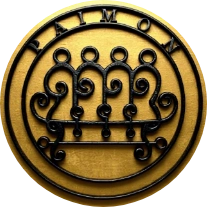From Ancient Egypt to Modern Mysticism: Exploring the Greek Magical Papyri
- Bran Alder

- Aug 29
- 4 min read

Imagine a time when science, religion, and magic were not so separate disciplines, but intertwined aspects of daily life. This was the world of the Greek Magical Papyri (PGM), a captivating collection of ancient texts from the 2nd century BCE to the 5th century CE. Far from being mere curiosities, these papyri offer a fascinating glimpse into Greco-Egyptian syncretism, packed with spells, rituals, and powerful invocations. This post dives into the origins of these remarkable texts, their profound cultural and historical significance, and their surprising influence on modern spirituality, psychology, and cultural studies. Prepare to discover the enduring relevance of these ancient manuscripts.
Introduction: A Window to an Intertwined Past
The Greek Magical Papyri are a vibrant testament to the rich cultural exchange that defined the Hellenistic and Roman eras. Written primarily in Greek, but also incorporating Demotic and Coptic, these texts reveal the spiritual and practical concerns that shaped ancient societies. Join us as we explore their origins, the socio-political context that birthed them, and their unexpected modern-day applications across various fields.
The Crucible of Creation: Where the PGM Began
The PGM didn't just appear out of nowhere; they were forged in a period of intense cultural blending. Here's what fueled their development:
Cultural Syncretism: The Blending of Worlds: Under Ptolemaic rule, Greek and Egyptian religious practices seamlessly merged, creating a fertile ground for unique magical traditions. Think of Hermes Trismegistus, a powerful figure born from the fusion of the Greek Hermes and the Egyptian Thoth – a perfect example of this captivating synthesis.
Practical Utility: Magic for Everyday Life: These texts weren't just for show; they were practical manuals. Ancient practitioners used them for everything from healing and divination to protection and, of course, love spells. Their pragmatic focus truly reflects the daily concerns of ordinary people in antiquity.
Transmission and Rediscovery: From Ancient Scrolls to Modern Scholars: Likely compiled by professional scribes and magicians, these papyri were carefully preserved in private collections for centuries. Their rediscovery in the 19th and 20th centuries, particularly finds like the Theban Magical Library, has been crucial in allowing us to piece together their incredible content.
What Made the PGM So Unique?
The Greek Magical Papyri are a testament to eclecticism and complexity. Here are some of their defining characteristics:
A Pantheon of Powers: The texts frequently invoke a diverse array of gods, angels, and spirits, beautifully blending Greek, Egyptian, and even Jewish traditions.
Symbols of Power: Magical symbols, intricate sigils, and powerful "voces magicae" (magical words) are abundant, believed to possess inherent, transformative power.
Meticulous Rituals: The papyri provide incredibly detailed instructions for performing rituals, outlining specific materials, precise chants, and exact gestures – leaving no room for error.
Still Relevant Today: The PGM's Modern Echoes
The influence of the Greek Magical Papyri extends far beyond the ancient world, continuing to shape contemporary thought and practice:
Spirituality and Occultism: Ancient Roots, Modern Practices: Modern practitioners of Hermeticism, Wicca, and various other esoteric traditions find deep inspiration in the PGM. They adapt these ancient rituals, breathing new life into them within contemporary contexts.
Psychological Insights: Understanding the Ancient Mind: Scholars now use the PGM as a unique lens to understand ancient psychology. They explore the crucial role of ritual in helping people cope with uncertainty and find a sense of control over their lives.
Cultural Studies: Unpacking Intertwined Worlds: These texts offer invaluable insights into how religion, science, and magic were deeply intertwined in antiquity. They challenge our modern tendency to draw rigid distinctions between these domains.
Art and Literature: A Wellspring of Inspiration: The evocative imagery and compelling themes within the PGM have inspired countless creative works, from captivating novels to breathtaking visual art. This ongoing influence fosters a renewed appreciation for ancient mysticism.
Key Takeaways: Why the PGM Still Matter
The Greek Magical Papyri are a powerful reflection of the unique confluence of cultural, religious, and practical influences in ancient Mediterranean societies. They offer a rich resource for understanding these complex worlds.
Their pragmatic focus on addressing everyday human concerns highlights the universality of our needs and aspirations, connecting us to people who lived thousands of years ago.
The enduring appeal of the PGM lies in their remarkable adaptability, allowing them to resonate with modern audiences across a wide array of disciplines.
Conclusion: Living Documents of Human Creativity
The Greek Magical Papyri are not just dusty relics of a bygone era; they are living documents that continue to inspire and inform us. By bridging the ancient and modern worlds, they serve as a potent reminder of the enduring power of human creativity and our timeless quest for meaning. Further exploration into their origins and applications promises to deepen our understanding of both our distant past and our unfolding present.
References
Betz, H. D. (1986). The Greek Magical Papyri in Translation, Including the Demotic Spells. University of Chicago Press.
Faraone, C. A. (1999). Ancient Greek Love Magic. Harvard University Press.
Ritner, R. K. (1995). "Egyptian Magical Practice under the Roman Empire: The Demotic Spells and Their Religious Context." In Aufstieg und Niedergang der römischen Welt.







Comments